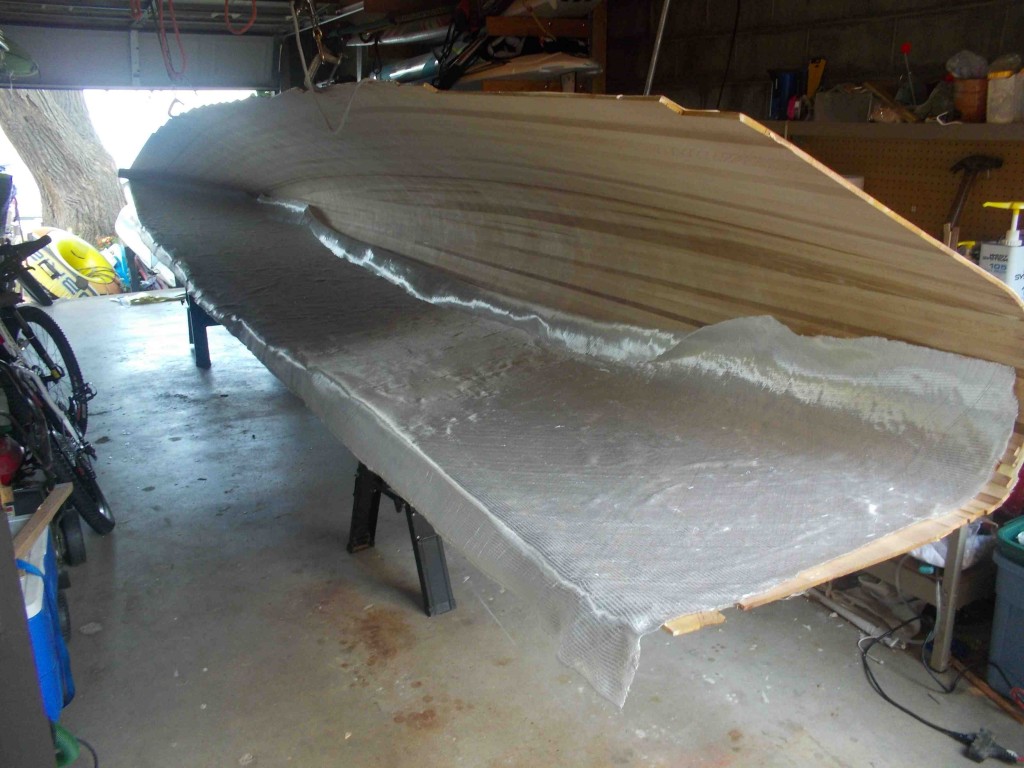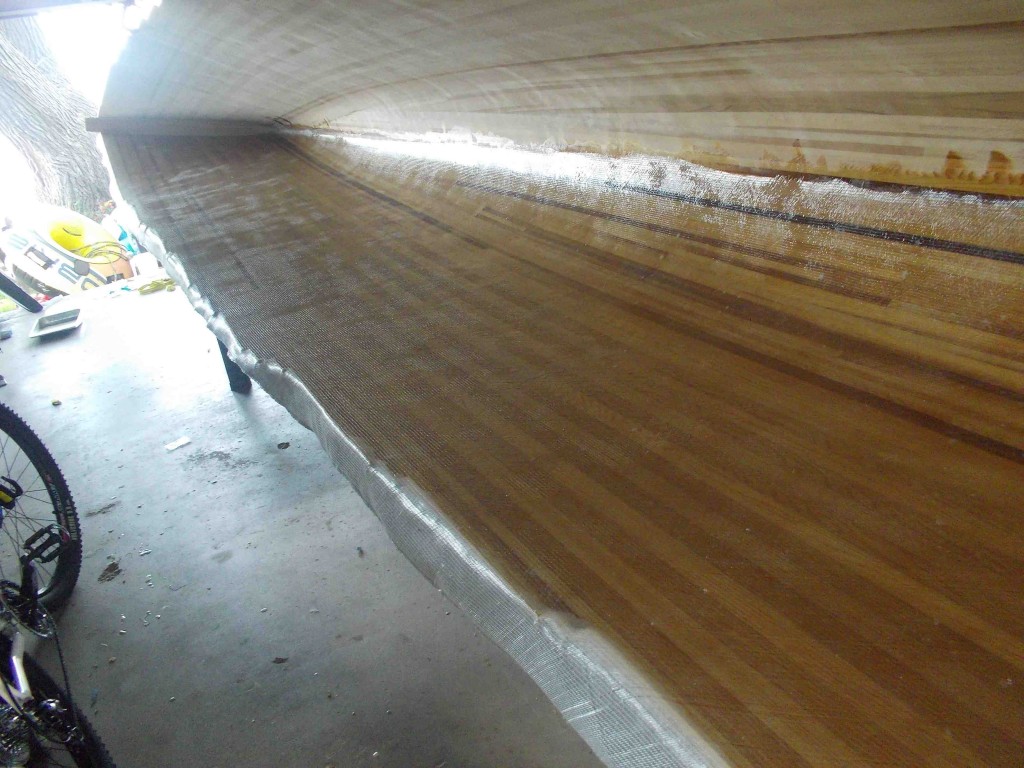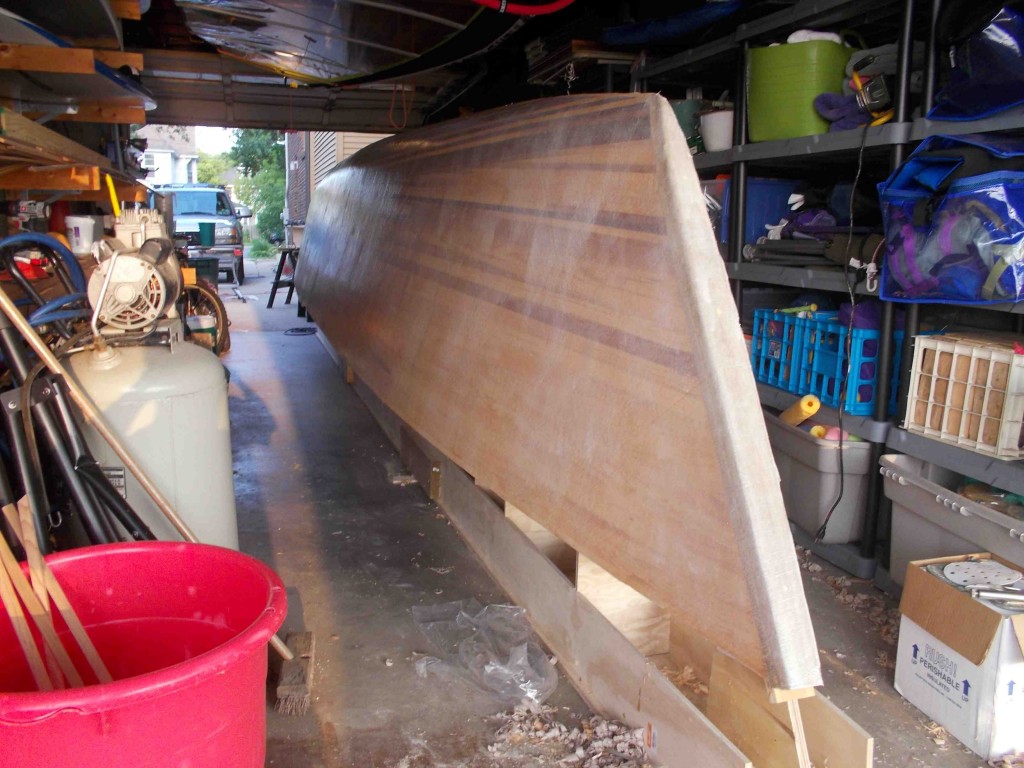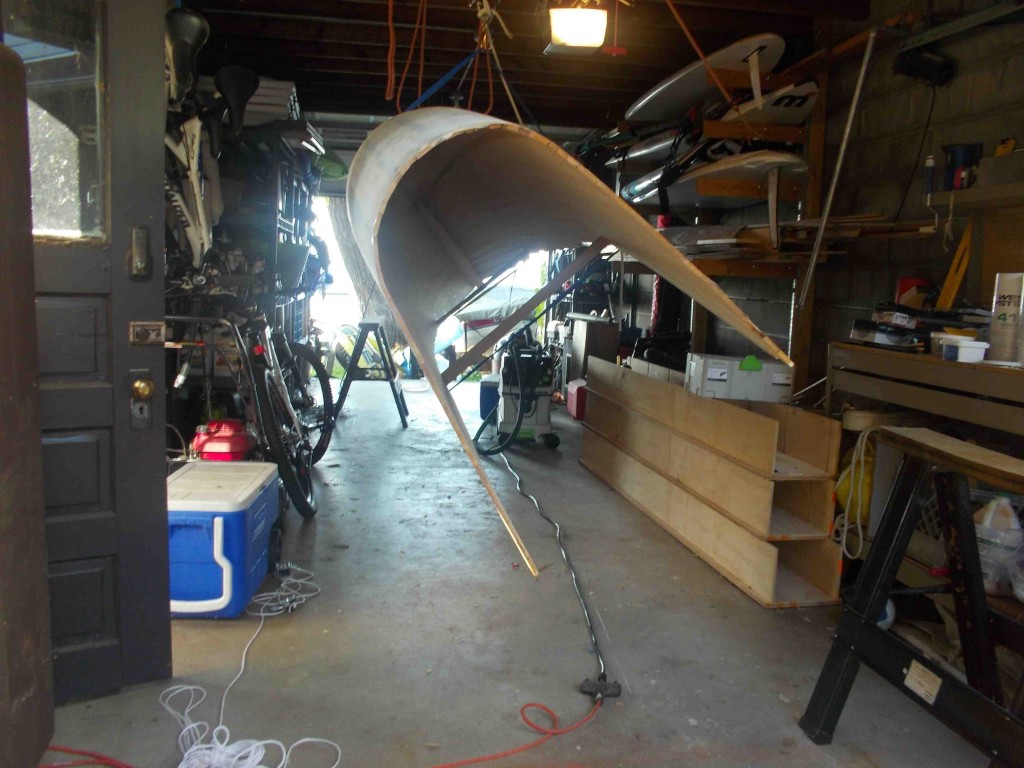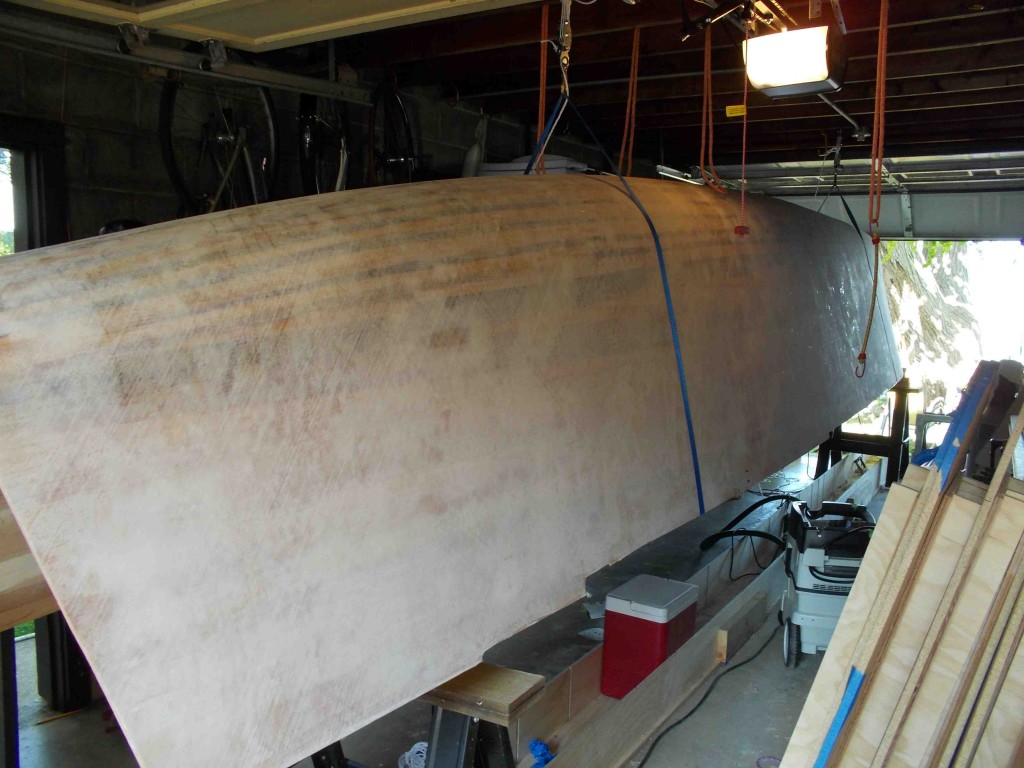Time for a little commitment. Fiberglassing is not a difficult process but preparation is key. I’ll fill in the details later, but here are some pictures
Glass ready to epoxied. Use a little blue masking tape to hold the curling edges in place.
Glass saturated in epoxy after first coat
Here is the hull after two coats of epoxy plus the third with a fairing filler to fill in some of the deep gaps in the biaxial glass
Popping the hull out of the mold once the outside glassing is done and rotating it to work on the interior. Notice the straps are braced against the temporary spacer boards to prevent the hull from being crushed.
Ok so we are ready to glass (these instructions are based on west system epoxy and fast hardener)
1) Pick the right day – The perfect day is about 70 -80 degrees, low humidity, slight breeze. If it was a cold night you will have to wait till the day warms up. Never work uncovered where the dew can settle on the boat at night. Remember you will need to have three coats of epoxy before you can get a good night sleep.
2) Vacuum and dust your shop as best as you can
3) Make sure you have plenty of containers to mix your epoxy. I was using 20 pumps at a time. Avoid reusing mixing containers to prolong pot life
4) Also have at least two paint trays and two rollers handy. If you work a little slower you will need a third roller
5) If you can have someone just pumping and mixing it is of great help
6) Layout your glass carefully and avoid kinks or folds
7) Use small pieces of masking tape to hold the glass in place
8) Have an ample supply of gloves available
9) Make sure you have at least one gallon of epoxy per side. 4 gallons a hull.
10) A glass roller is your best friend
11) Have some rags and a a spray bottle with water and vinegar for minor clean ups
I started by applying epoxy 2/3 back working towards the back and then the front. This gave me about the right time to keep a wet edge and keep the glass in place. With a third person You can basically start in the middle and work your way out. For more details My reference book is Epoxy Basics with a variation for dealing with the 12oz biaxial. I found it almost impossible to get rid of a large number of bubbles unless I used a fiberglass roller. I did one side by myself and it took 2.5 hrs for the initial glass work. The second side, with two helpers, just under an hour and a half.
